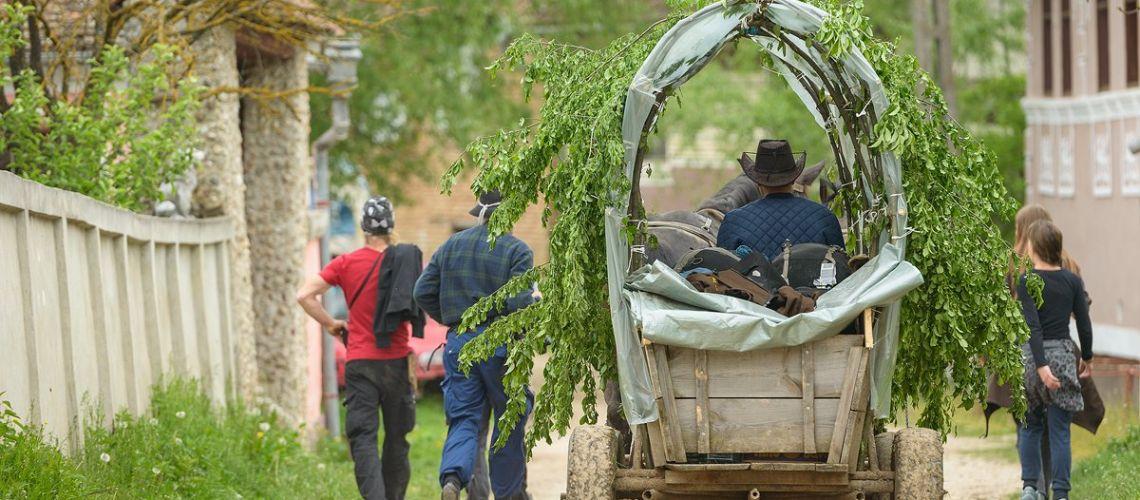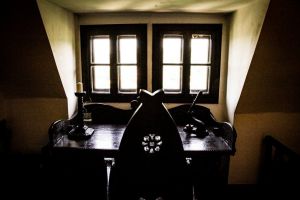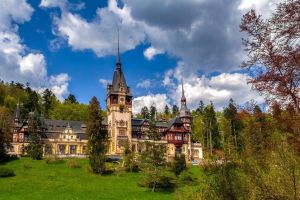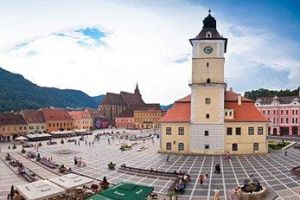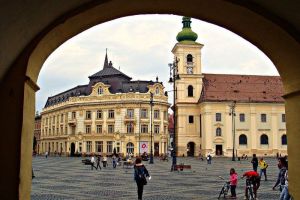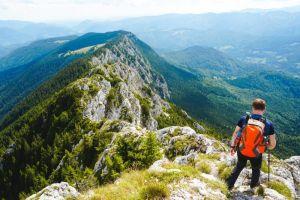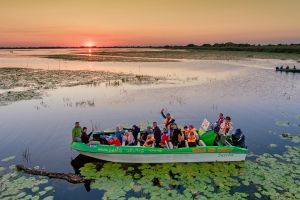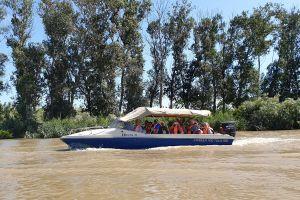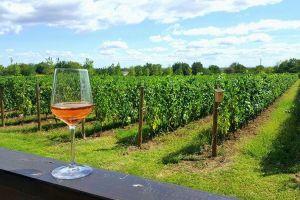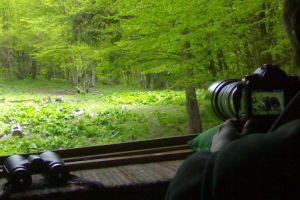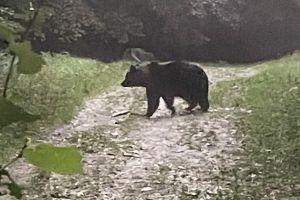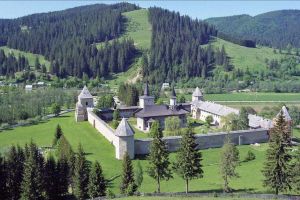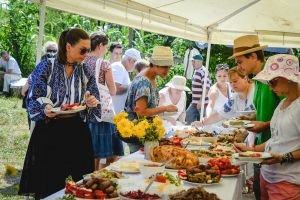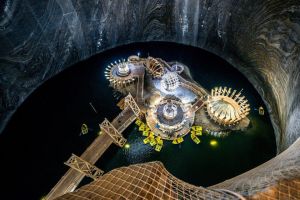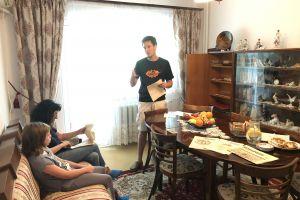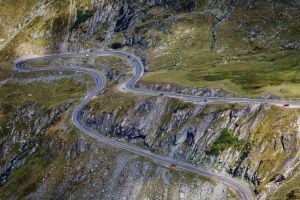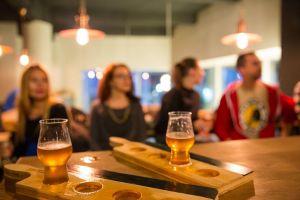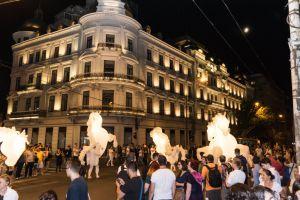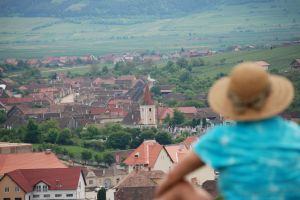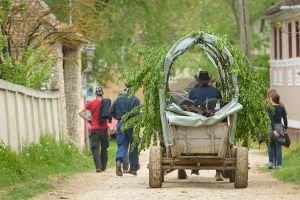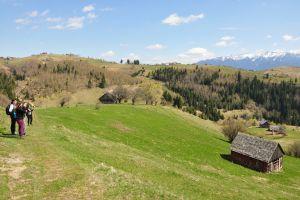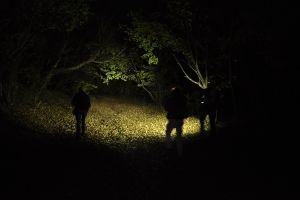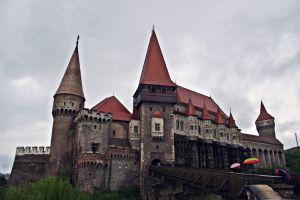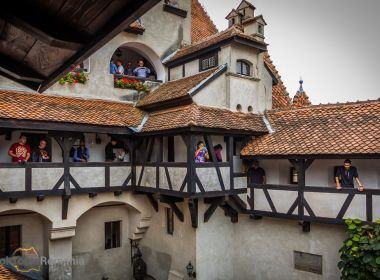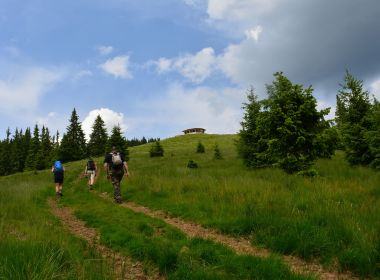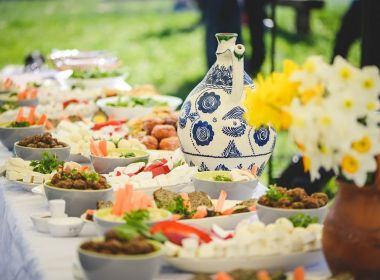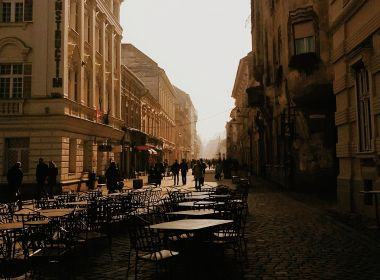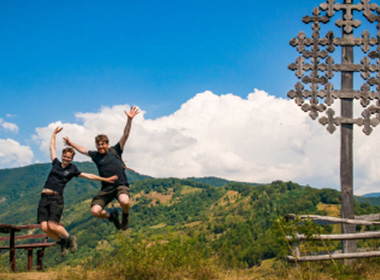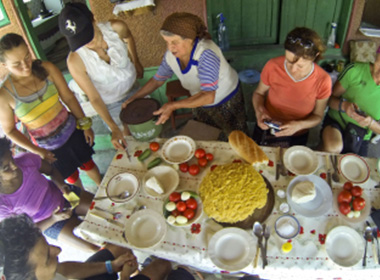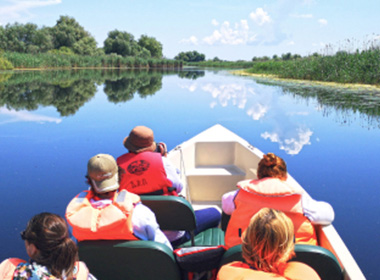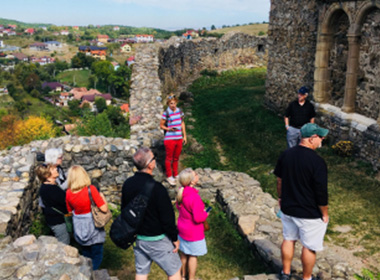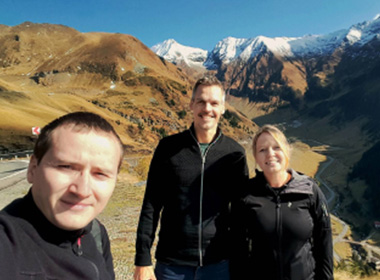There are so many things to do in Romania and places to visit - but most tourists have no idea where to start! Most people come with low or no expectations about our country because it's still one of the lesser-known tourist destinations in Eastern Europe.
But they soon realize it’s a beautiful holiday destination with friendly people, lots of tourist attractions and cool things to do! So put Romania on your 2026 bucket list and use this article for inspiration!
What is Romania known for? In this article we'll look at:
- famous tourist cities such as Bucharest, Brasov or Sibiu
- popular attractions such as the Palace of Parliament, Bran Castle, Corvin Castle, Peleş Castle, Transfagarasan Highway and UNESCO World Heritage sites
- tourist regions known for their cultural heritage: Transylvania, Maramures and Bucovina
But besides the usual touristy places to visit, we’re also going to tell you where to go and what to do so you have an authentic local experience of Romanian culture, for example:
- how to experience the traditional rural life our country is famous for
- why our wooden churches, painted monasteries and fortified churches are more than spiritual places
- best places to try local cuisine
- why a visiting a merry cemetery is a good idea
And, finally, there are some unique things to do in Romania such as:
- seeing wild animals and brown bears... in the wild!
- visiting a haunted forest filled with mysterious legends
- exploring the incredible Danube Delta
Before we start, if you're looking for practical info check our guide on how to visit Romania for the first time or the best time to visit.
Table of contents
- 1. Visit Dracula's Castle aka Bran Castle
- 2. Romania's most beautiful castle: Peleș Castle
- 3. A Gothic Masterpiece in Brasov: The Black Church
- 4. Discover the cultural heritage of Sibiu
- 5. Visit famous museums
- 6. Go hiking in the wild Carpathian Mountains
- 7. Romania’s most famous natural site: the Danube Delta
- 8. Discover how good Romanian wines are
- 9. Watch brown bears... in the wild!
- 10. Admire the 500 years old Painted Monasteries of Bucovina
- 11. Go on a slow and picturesque steam train ride
- 12. A famous UNESCO World Heritage Site: Sighișoara Citadel
- 13. Try traditional Romanian food & tasty vegetables
- 14. Visit Merry Cemetery... wait, what?
- 15. Ride an underground Ferris wheel in Turda Salt Mine
- 16. Visit Europe’s biggest building: Palace of Parliament in Bucharest
- 17. Admire the most beautiful buildings in Romania
- 18. A famous tourist attraction: Transfăgărășan Highway
- 19. Go out in Bucharest's Old Town
- 20. Discover the Black Sea beach
- 21. See the Romanian Sphinx in the Bucegi Mountains
- 22. Experience authentic Romanian village life
- 23. Visit Romania’s haunted forest - for real
- 24. Cantacuzino Castle of the richest Romanian family
- 25. Best among medieval castles: Corvin Castle
- BONUS: Poenari Castle - the real Dracula Castle
1. Visit Dracula's Castle aka Bran Castle
Of all the remarkable places to visit in Romania, Bran Castle remains the most popular with international tourists and by far one of the most famous castles in our country. Although this Transylvanian castle was an important medieval fortress and home to Romania's Queen Marie, it's far better known for one fictional resident: the vampire Count Dracula.
Honestly, nobody's sure how much Bram Stoker was inspired by Bran Castle or Vlad the Impaler who is one of the most famous people from Romania… but that hasn't stopped Hollywood movie fans and tourists renaming it to "Dracula's Castle."
This is the #1 tourist attraction in Romania so brace yourself for crowds of tourists... Bran Castle turned into a tacky place with cheap Dracula souvenirs, low-quality wines, chocolate and so on.
Lots of tours and non-Romanian travel guides will give you made-up Dracula stories too. But if you’re looking for the real history of the castle, Vlad the Impaler's life and even info about Poenari Castle - then our guides will do that.
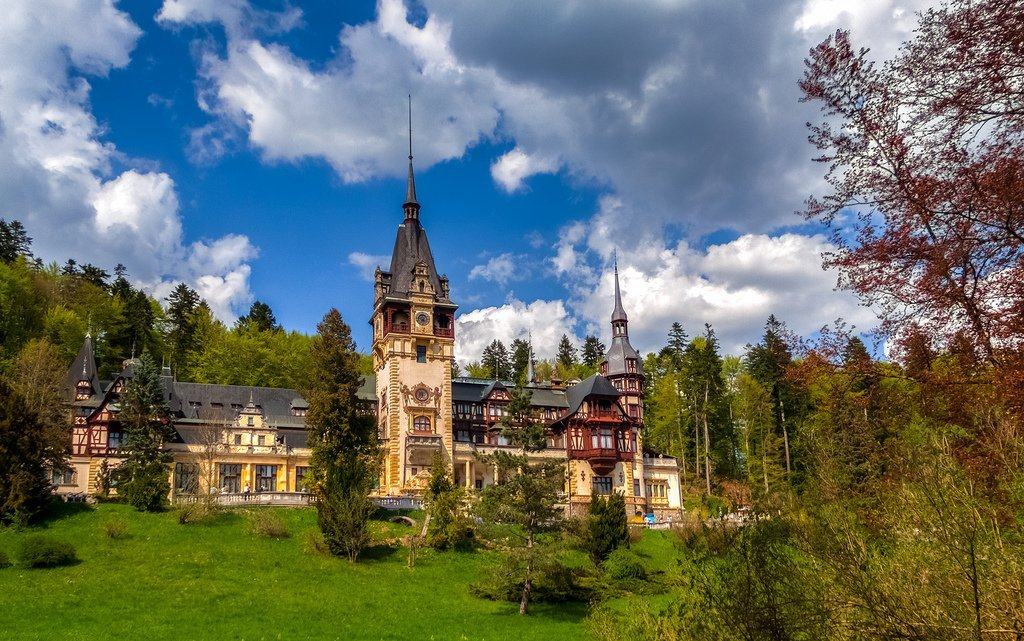
2. Romania's most beautiful castle: Peleș Castle
If Bran Castle speaks of Romania's medieval heritage, then Peles Castle in Sinaia is a symbol of our short-lived royal family. It was built in the late 19th century at the orders of King Carol, the first Romanian king, to serve as the summer residence for Romania's royal family.
The castle was built in neo-Renaissance architecture with beautiful stained glass windows and was considered an engineering masterpiece for its time. There are 160 rooms in total for guests to explore over 2 floors, with art works you'd find in art galleries, impressive crystal chandeliers and an armoury with pieces dating back to the 15h century.
During the communist regime (1947-1989) it was untouched which means it's well preserved - and worth adding to your plan. Be sure to check out Pelisor Castle nearby, the little brother.
A personal favorite of ours, Peleş castle is one of the best castles in Romania. A good guide can tell you how in the span of 100 years 3 distinct principalities under foreign domination united into a democratic, flourishing monarchy that was eventually overthrown by communist dictatorship in 1944.
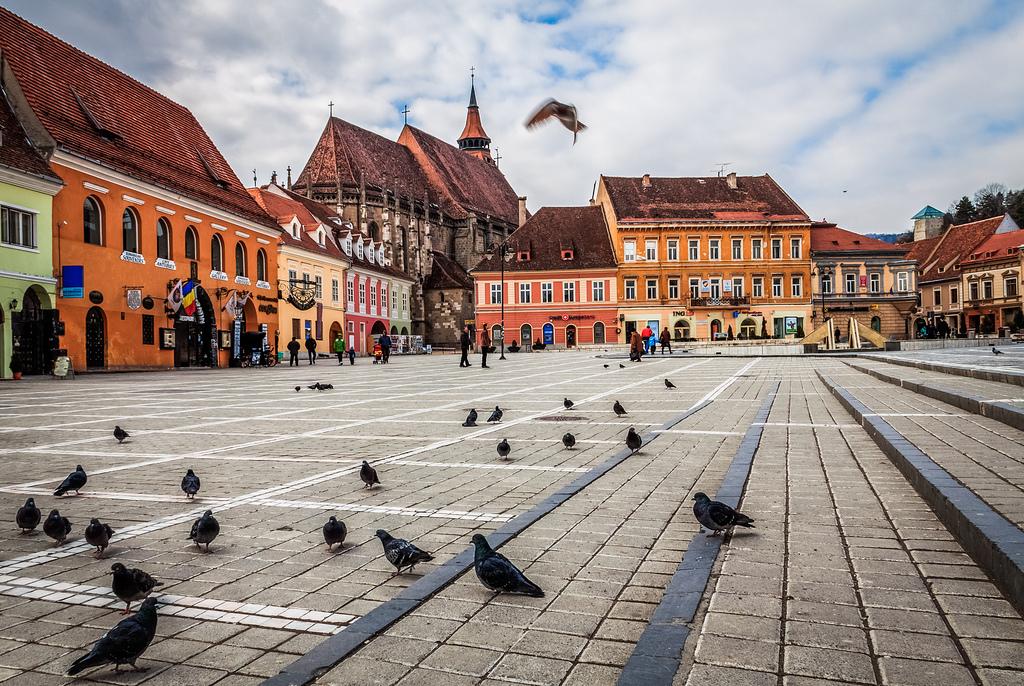
3. A Gothic Masterpiece in Brasov: The Black Church
If you're planning to visit Bran Castle, a stop in Brașov's Old Town is a must, and for sure, it'll be an interesting visit. The city is one of the most popular tourist destinations in Romania, famous for its charming, well-preserved medieval atmosphere, surrounded by mountains. You'll be impressed by the old buildings that grace the city's historic center.
The city's iconic landmark is the Black Church, which is also a great example of medieval German-Saxon architecture. This imposing Gothic church, finished in 1477, is not just one of Romania's top attractions, but it also serves as the largest place of worship for Lutherans.
TThe Black Church is a highlight of any walking tour through Brasov’s Old Town area, towering over Council Square with its striking Gothic design. Inside, you’ll find Romanian artifacts, a massive organ, Oriental carpets, and a 17th-century carved pulpit. After that, don’t forget to go off the beaten path and truly discover what Brasov has to offer.
Brasov is the perfect base for exploring medieval castles like Bran and Peles, hiking, or visiting traditional villages such as Magura.
In winter, it’s also a great spot for hitting the ski slopes in Poiana Brasov and enjoying winter sports.
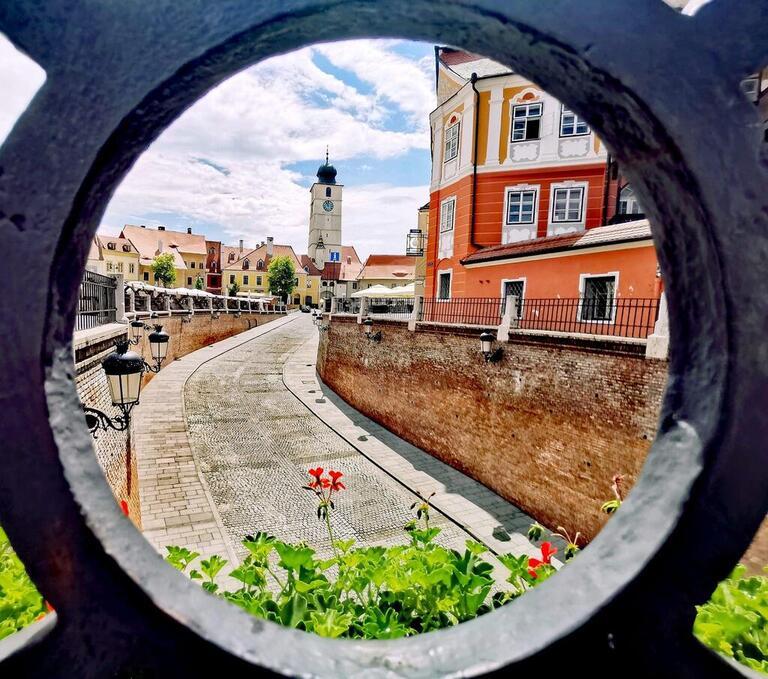
4. Discover the cultural heritage of Sibiu
One of the best things to do in Transylvania is to visit the famous city of Sibiu, the 2007 European Capital of Culture.
With significant Saxon influences, an aristocratic air to it and a vibrant cultural scene, Sibiu competes with Brasov as Romania's top tourist destination. Even if I've been in both many times, it's hard to pick my favorite :)
Sibiu's Old Town, with its Lower Town and Upper Town, is an architectural delight with many cultural sights, artisan shops and chic cafes. Make sure you have enough time to walk - or get lost - on its streets. Plus, a walk along the city's fortifications will take you back in time.
With an airport served by many low-cost flights from all over Europe and conveniently located in the heart of the country, there are lots things to do in Sibiu.
Popular attractions such as Corvin Castle, the historic city of Sighisoara, the fortified churches of Transylvania, or Transfagarasan Highway are nearby, so this is a perfect place for a city break in Romania.
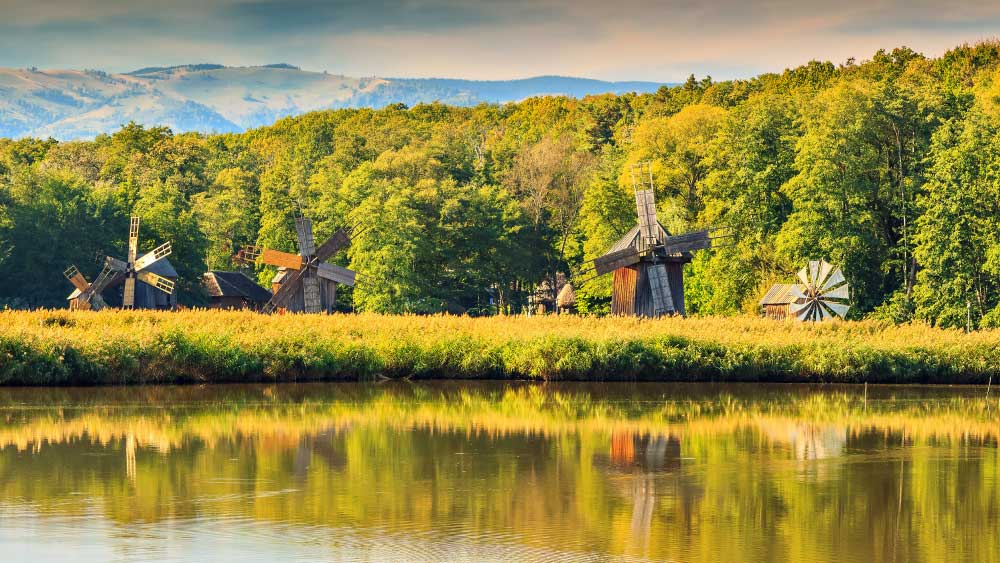
5. Visit famous museums
Located in the historic centre of Sibiu, in the Large Square, the Brukenthal National Museum occupies the elegant former home of 18th-century Saxon aristocrat and art collector Samuel von Brukenthal. Opened to the public in the early 1800s, it remains a cultural hotspot and must-see attraction in Romania.
In contrast, the open-air museum Astra Traditional Folk and Civilisation Museum received 3 Michelin stars for the amazing cultural experience it offers as an ethnographic museum. Over 400 houses from all over Romania and "rural technology" will show you why the Romanian village is at the heart of our culture, literature and national spirit.
While in Bucharest, visit the Village Museum - one of the best Romanian museums - in case you don't have enough time to go to the country. And the National Museum of Romanian History, located on Calea Victoriei, Bucharest's city center, if you want to learn more about Romania's rich and complex past.
- Bonus: If you're passionate about museums, check out our article on the most interesting museums in Romania to prepare your must-see list.
6. Go hiking in the wild Carpathian Mountains
The Carpathian Mountains cover 55% of Romania, rising from 800m foothills to 2,554m at Moldoveanu Peak. This makes Romania a hidden gem for hiking, mountaineering, wildlife watching, and outdoor adventures like MTB, via ferrata, enduro, camping, and canyoning.
The Romanian Carpathians offers a wide variety of trails for everyone, from city folk looking to be out in nature, to amateur hikers and experienced mountaineers looking for a challenge.
Romania offers stunning natural attractions too, like the Babele and Sphinx in the Bucegi Mountains, Zarnesti and Turda Gorges, Fundatura Ponorului, 7 Stairs Canyon, plus waterfalls, glacial lakes, caves, and 12 peaks over 2,500m to conquer.
But because Romania's Carpathian Mountains are so wild and undiscovered - tourist hiking infrastructure is severely underdeveloped and unfriendly even for locals!
Check our guide for hiking in Romania to find out how to plan your trip, why you should hire a licensed mountain guide to stay safe and where to go.
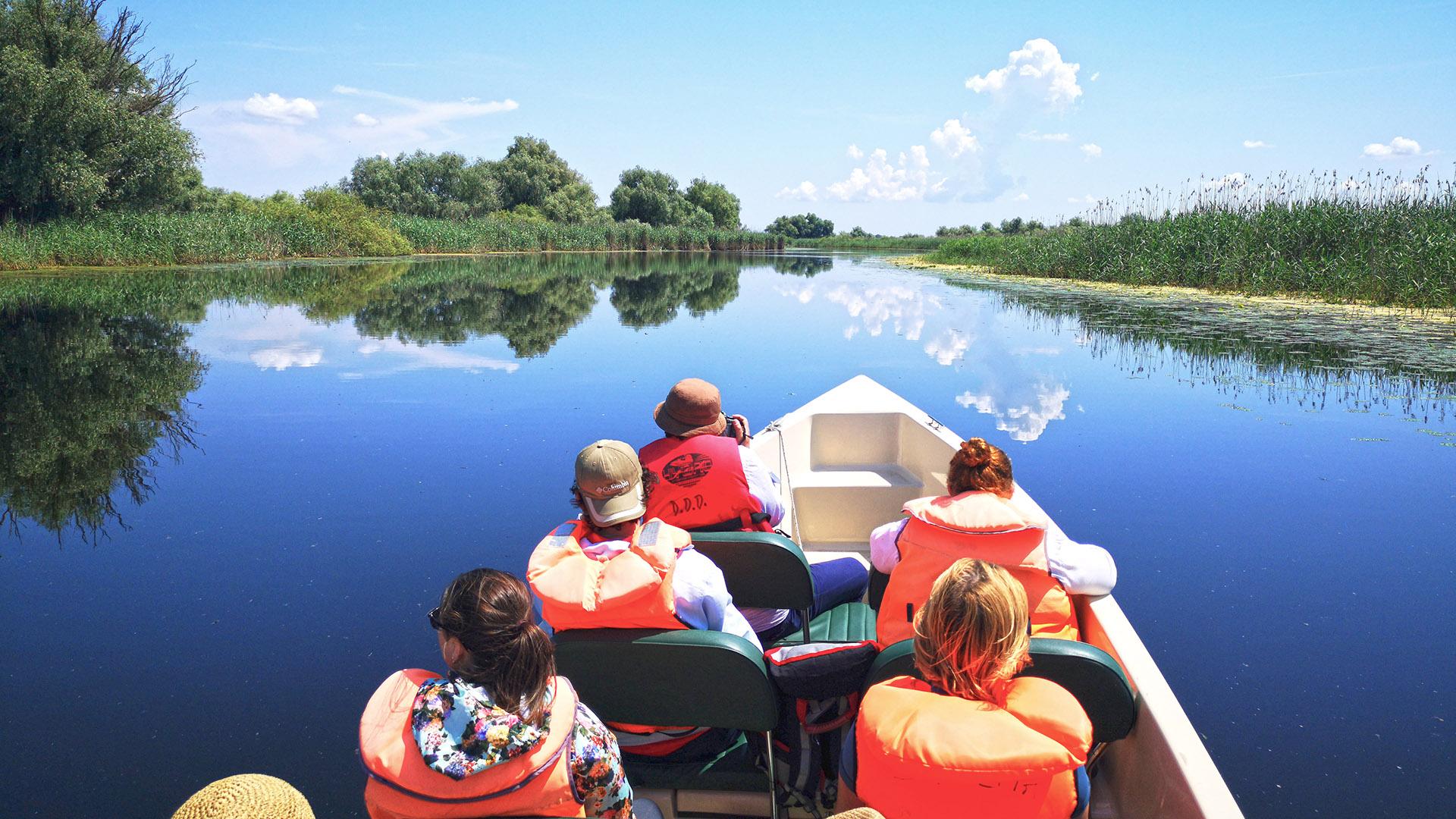
7. Romania’s most famous natural site: the Danube Delta
A UNESCO World Heritage site, the Danube Delta is one of Romania’s must-see destinations. And since everything happens on water, you’ll need to book a boat tour, but it’s absolutely worth it.
The Delta formed where the Danube River flows into the Black Sea, it's the 2nd largest in Europe and has the 3rd largest biodiversity in the world exceeded only by the Great Barrier Reef in Australia and the Galapagos Archipelago in Ecuador.
The Danube Delta, one of the world’s largest and best-preserved deltas, is a paradise of canals, marshes, and lakes. Home to over 3,450 animal species, including 300 birds, wild horses in Letea Forest, and 1,700 plants, it’s perfect for birdwatchers, photographers, and nature lovers. Sunsets here are magical.
A natural reserve unlike anything else in Europe
Exploring requires a local guide and a boat, as public transport is nonexistent and speed boats disturb wildlife. We offer 4-day small-group tours to experience the Delta responsibly.
Just 4 hours from Bucharest, plan 2–3 days to fully enjoy the wildlife and try the Delta’s unique fish cuisine.
BONUS:If you want to explore the Danube Delta while also seeing other natural attractions, a Danube cruise through Romania is a perfect way to discover the country.
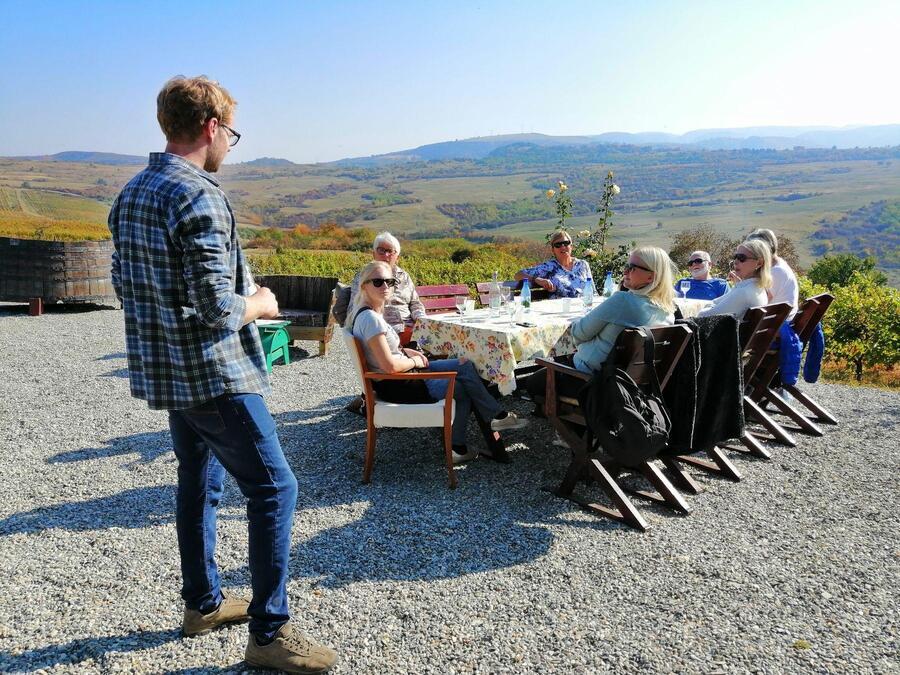
8. Discover how good Romanian wines are
You’ll be surprised to know that Romania is Europe’s 5th largest wine producer! With vast hills bathed in Sun and moderate weather, our country's geography is ideal for vineyards. And Romanians love to socialise over a glass, or two, or three... :)
In the last 15 years, the quality and variety of our wines and the culture surrounding wine drinking have exploded. Besides popular large-scale producers who go for the whole spectrum of wines, there are many craft, artisan small winemakers who focus on 2-3 types which are exceptional. This will be a great souvenir from Romania to surprise those back home.
Just 1h away from Bucharest, Dealu Mare is renowned for its vineyards and premium wineries, many set in charming 18th-century villas overlooking scenic landscapes. While Transylvania also boasts wineries, they are less accessible.
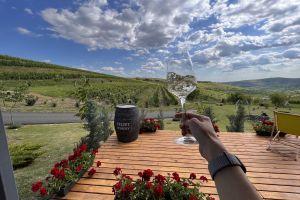
Bike & Wine Tasting Trip in Bucharest Countryside
Start from: Dealu Mare wine area (or Bucharest)
However, most wineries host tastings for groups of 4 or more due to limited capacity. But luckily for you, we developed strong partnerships with some premium wineries so if you want a Romanian wine tasting paired with local cheeses for two - we can arrange that!
9. Watch brown bears... in the wild!
Let’s go back to the mountains! One of the more unique things you to do in Romania is wildlife watching - especially brown bears of which we have the largest population in Europe!
As many areas in the Carpathian Mts. are untouched and wild, lots of animals roam these lands freely: bears, deer, lynx, bisons, boars, wolves and many more. Romania is known as Europe’s last wilderness reserve with two documentaries about this: Wild Carpathia and Untamed Romania.
And that's part of the reason why it may be dangerous for hikers to go on their own.
But if you want to see wild animals in their natural habitat while staying safe we have a selection of wildlife tours most of which take place in Brasov county. Our specialist wildlife guides will take you deep into the mountains.
85-100% chances of seeing bears on this tour:
60-80% chances of seeing bears and other animals on this tour:
70-100% chances of seeing animals on this unique trip in Romania's wildest area run by a conservation non-profit:
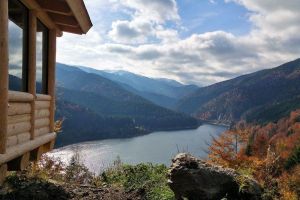
3-Day Hiking & Wildlife Trip at an Eco-Luxury Private Cabin in Fagaras Mts
Start from: Rucar, Arges county
Please note - these tours are NOT regular hiking trips: You will go on unmarked trails or difficult terrain to high-altitude observation points. Difficulty is higher, logistics complex and prices reflect that.
Here's how animals have fun in Piatra Craiului National Park
Nature is unpredictable, so wildlife sightings aren't guaranteed. However, our expert guides have a keen sense of tracking animals and will do their best to maximize your chances.
Along the way, you'll gain fascinating insights into tracking and animal behavior, a perfect hands-on learning experience, especially for teens and young explorers.
Birdwatching can also be done in some forests close to Brasov where our specialist bird guides can take you on a private trip. Or in one of the many national parks in Romania.
Seeing wild animals is definitely a unique activity in Romania - but you can also see friendly animals such as sheep and cows during a hike in Piatra Craiului National Park (close to Brasov) or Apuseni Natural Park (close to Cluj-Napoca).
You'll probably go hiking in traditional villages and try local specialty cheeses cold cuts and homegrown vegetables from the villagers.
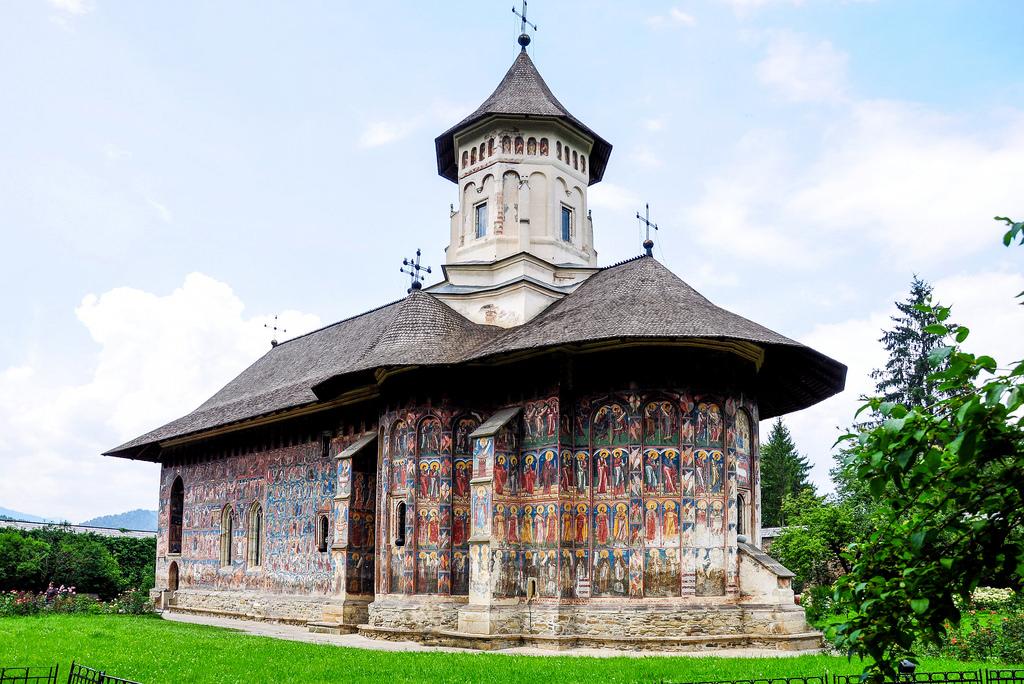
10. Admire the 500 years old Painted Monasteries of Bucovina
Ok - back to culture! There are many beautiful churches in Romania tourists can visit because spirituality plays an important role in our culture and life. But among them, the Painted Monasteries of Bukovina definitely stand out.
Built between the 15th and 16th centuries, these monasteries are known for their impressive exterior frescoes which depict scenes from the bible and are incredibly well preserved despite their age - almost by miracle!
These paintings are so vivid and unique that they are part of the World Heritage.
The Bucovina region is home to six stunning painted monasteries in villages like Voroneț, Humor, Moldovița, Pătrăuți, Probota, Suceava, and Sucevița. Their vivid frescoes of saints, biblical scenes, and legends remain remarkably well preserved, believed by many to hold deep spiritual power.
Start with Voroneț, a UNESCO site famous for its “Voroneț Blue” Judgement Day fresco, then visit Moldovița and Sucevița.
These are active monasteries, so be respectful. No loud behavior or selfie sticks.
Plan at least three days to reach Bucovina from Bucharest and explore the monasteries and nearby attractions at a relaxed pace.
You may want to check our guide for public transport in Romania to understand why we keep saying logistics are complicated... :)
- Bonus: If you want to discover more about the spiritual side of Romania, be sure to also visit the wooden churches of Maramures.
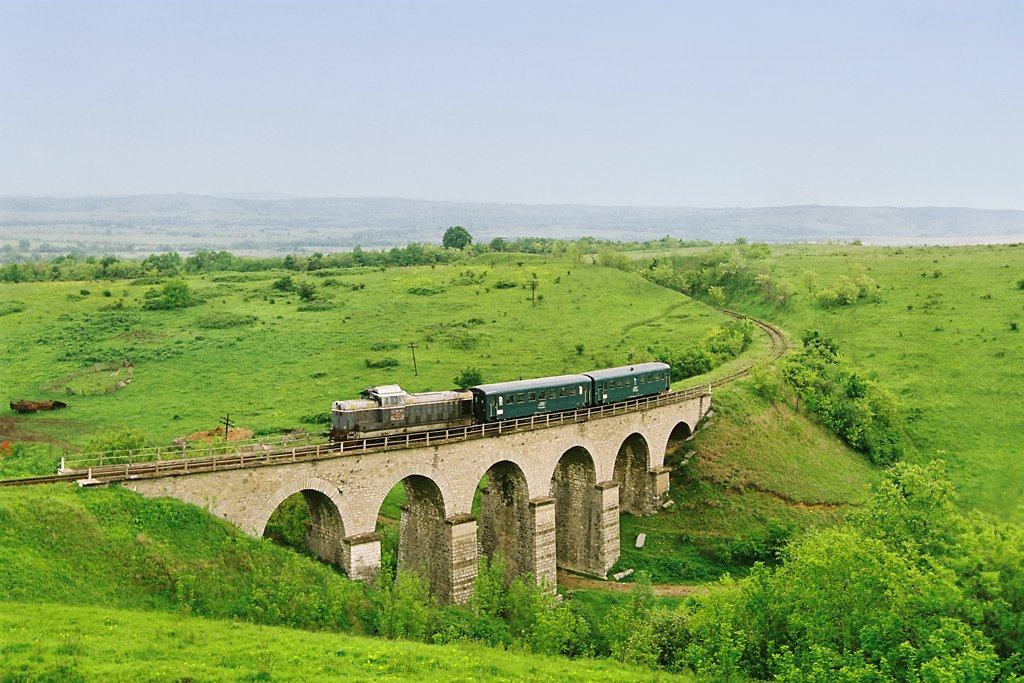
The Semering Oravita-Anina train in Timisoara
11. Go on a slow and picturesque steam train ride
The best way to enjoy Romania's natural beauty is through slow travel. Hiking or going by car on countryside roads may be what comes to mind, but there's a better alternative: old steam trains moving at 50 km/h through beautiful natural areas not accessible any other way! How cool is this?
The Mocanita Steam Train in the North-Western Maramures region is probably the most famous.
A 3-hour long ride (with multiple stops) through valleys, hills and woodlands will make you appreciate nature's simple beauty - best enjoyed slow, of course!
This narrow railway was originally used for forest exploitation activities and the Mocanita (name of the train) is the only one capable of navigating it.
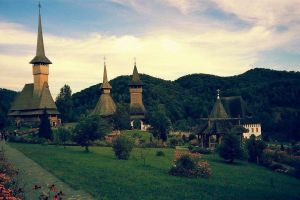
2 or 3 Days in Maramures: Wooden Churches, Traditions & Village Life
Start from: Cluj-Napoca
A similar steam train ride can be found in the neighbouring region of Bucovina and is called Hutulca.
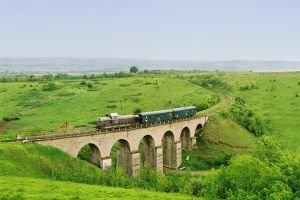
Hotspots around Timisoara: Bigar Waterfall & Oravita-Anina Steam Train
Start from: Timisoara
But my favourite train ride is lesser known – and more beautiful – the Oravita-Anina Semering train, South of Timisoara (pictured above). The Semering (name of the train) will take you on a route where picturesque scenery with mid-level mountains and open valleys dotted by traditional villages.
Pro tip:The best time I like to go on these train rides is during mid-September - late October when the autumn foliage offers spectacular views!
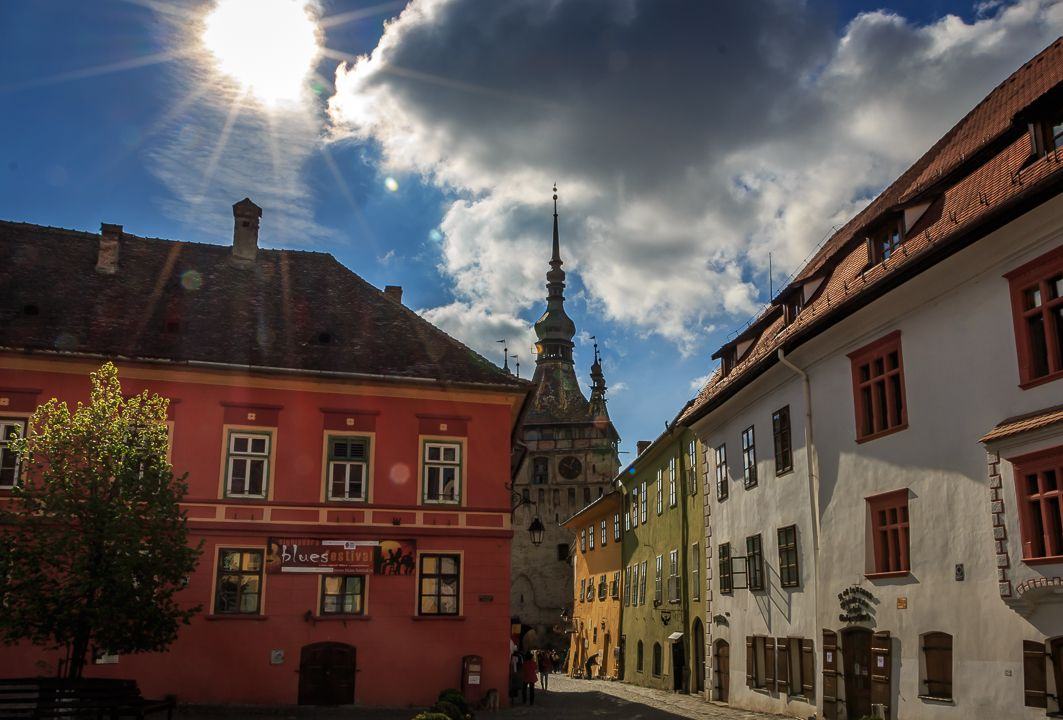
12. A famous UNESCO World Heritage Site: Sighișoara Citadel
Sighișoara is a small city in the heart of Transylvania where you'll find one of the most culturally significant and popular tourist places to visit in Romania: Sighisoara Citadel another UNESCO heritage site with a long history to tell.
Perched on a hill overlooking Transylvania’s plains, this 12th-century fortified citadel was built by German Saxon merchants to protect trade routes. One of Europe’s best-preserved medieval citadels, its iconic Clock Tower is a must-see. But go with a guide, there is much history to learn here. :)
And make sure to find the time to climb the Clock Tower, as it provides a panoramic view of all of Sighisoara.
Wandering the cobbled streets of Sighisoara Citadel, to feel its serene atmosphere, is one of the best things to do in Romania, and yes, people still live in the charming medieval houses.
My favorite time to visit this place is during winter in Romania when the cold air, snow-covered streets and few tourists create a magical medieval atmosphere.
Conveniently located in the heart of Transylvania, we have day trips that will take you on a guided tour to Sighisoara from every city.
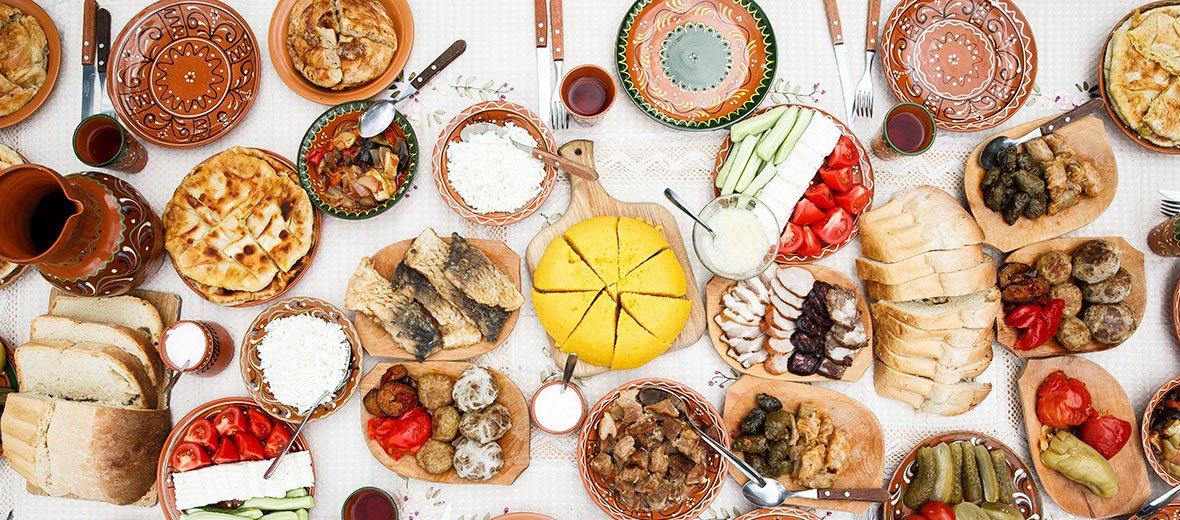
13. Try traditional Romanian food & tasty vegetables
Romanian cuisine blends Turkish, Balkan, Austro-Hungarian, and Russian influences, reflecting our agrarian roots and love for hearty, homemade food. Vegetarians and vegans will find plenty of options thanks to traditional fasting dishes (mâncare de post), made without meat or animal products.
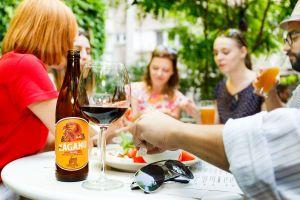
Bucharest Street Food Tour: Farmers' Markets & Hidden Streets
Start from: University Square
Must-try dishes include sarmale (cabbage rolls), mici, ciorbă (sour soup), and mămăligă (polenta) with cheese and sour cream. Don’t miss starters like eggplant salad or zacusca, and save room for desserts like papanasi or cozonac.
Our mission is to support responsible tourism in Romania and that's why most our trips include home-cooked meals which is, for me, arguably the most interesting thing I want to experience when visiting a country besides typical tourist sightseeing.
And to top it off, since 2010, speciality coffee culture and consumption have boomed in Romania. Check our list with the best coffee shops in Romania so you finish your meal in style - like Romanians do!
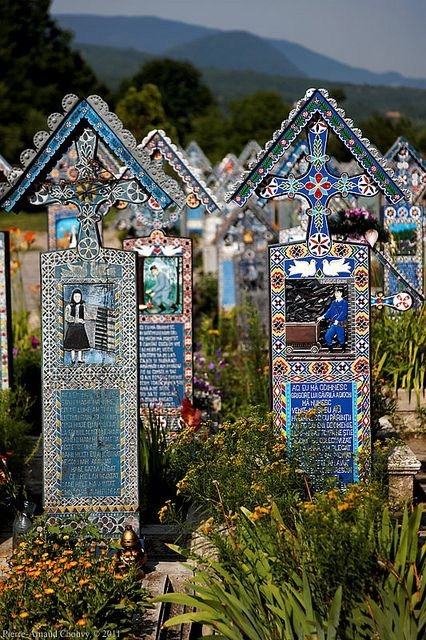
14. Visit Merry Cemetery... wait, what?
One of the most unusual things to do in Romania is visit the Săpânța Merry Cemetery in Maramureș. This open-air museum takes a cheerful, humorous view of death, with brightly painted tombstones that tell each person’s life story through witty verses and thoughtful lessons.
Unlike typical grey cemeteries, the Merry Cemetery celebrates life with color, humor, and a touch of wisdom.
Pro tip:The stories are written in Romanian so without a local guide to translate there's really no point in visiting
Started in the 1960s the Merry Cemetery is a unique tourist attraction in Romania and Europe for its unorthodox approach despite being located in one of the most religious regions of Romania.
For context: On Sundays people in Maramures wear their best folk costumes to attend service in their UNESCO wooden churches.
There's an interesting reason this 'happy' cemetery exists. And if you visit with our guide, a native of Maramures, he'll tell you what that is and also take you to the local artisan who makes these crosses.
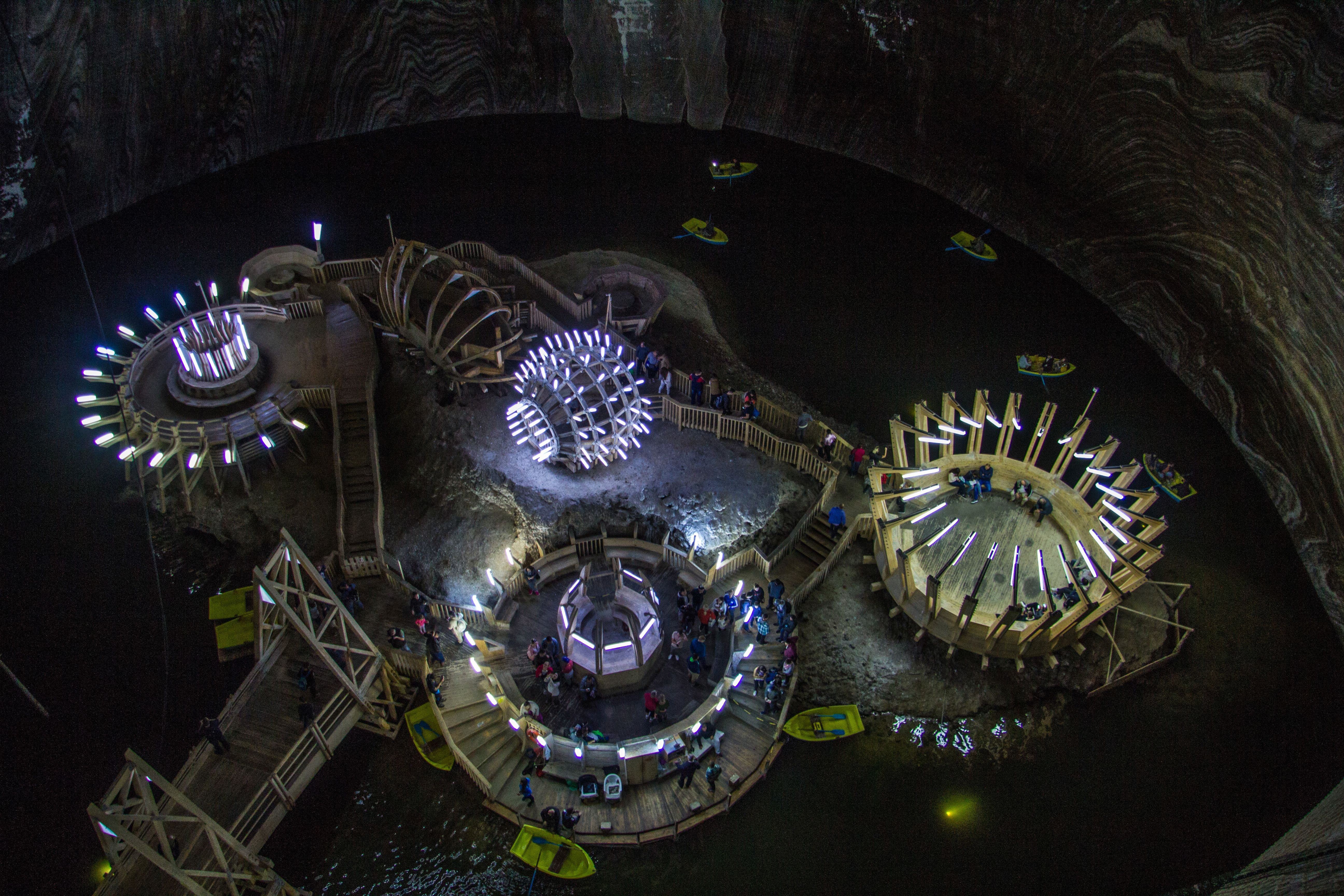
15. Ride an underground Ferris wheel in Turda Salt Mine
40 minutes South of Cluj-Napoca in the city of Turda is one the most popular and interesting tourist attractions in Romania: Turda Salt Mine or Salina Turda, as the locals call it, a salt mine dating from Roman times, which was used throughout the Middle Ages, that now houses an insane, unexpected amusement park! So this day trip is one of the many things to do in Cluj you should put on your list!
In this huge underground complex you'll discover impressive caverns and corridors carved in salt where carefully placed lighting installations create a magical feeling!
In addition to its famed Ferris wheel, this underground amusement park has a bowling alley, a mini golf course, table tennis facilities and even an underground lake where you enjoy a unique boat trip... underground! So this is a perfect place to visit on a family holiday in Romania.
Suppose this wasn’t enough to convince you to visit Turda Salt Mine, the most popular salt mine in Romania. In that case, you should know that breathing salty air is good for your lungs and prescribed as treatment for people with any kind of respiratory issues. So spending 3 hours in this popular place will be one of the best things to do in Romania for your health!
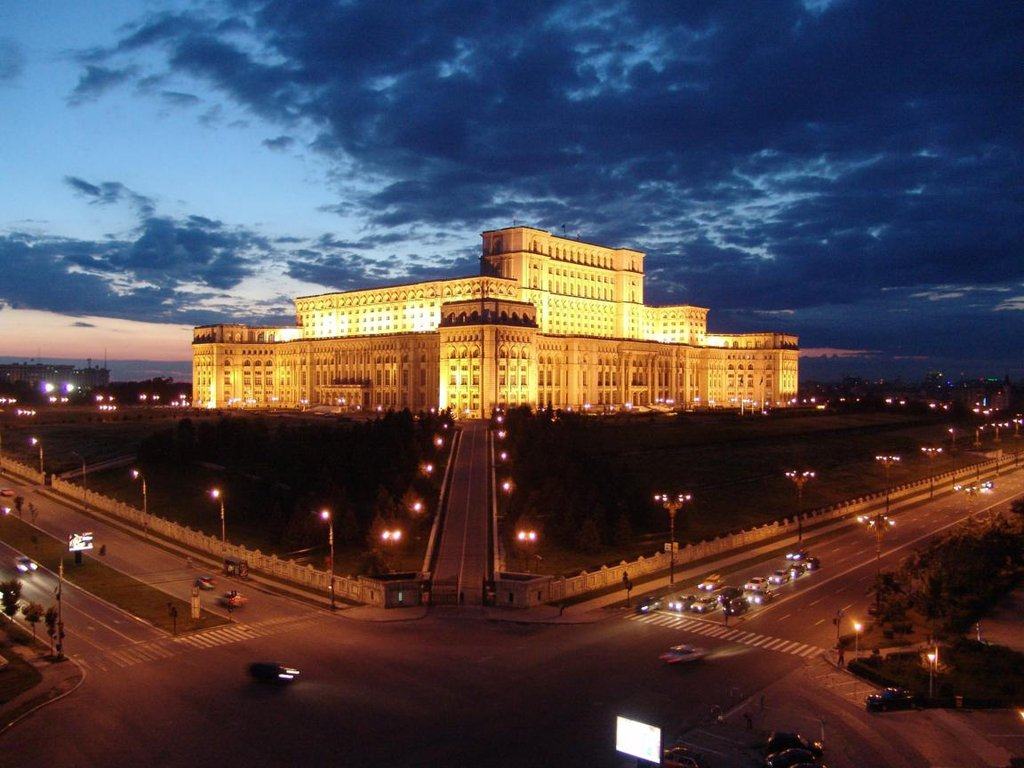
16. Visit Europe’s biggest building: Palace of Parliament in Bucharest
When searching for places to visit and things to do in Romania, the Palace of Parliament in Bucharest is impossible to miss, as it is the second-largest administrative building in the world (after the Pentagon), and the biggest building in Europe.
Built as the grand, controversial vision of communist leader Nicolae Ceaușescu, it's also known as Ceaușescu's Palace or the House of the People.
To create it, an entire neighborhood was demolished, and vast human, material, and financial resources were spent over six years in the 1980s. Romanians remain divided on its significance.
To create it, an entire neighborhood was demolished, and vast human, material, and financial resources were spent over six years in the 1980s. Romanians remain divided on its significance.
Tours inside are led by official staff official staff but they'll only tell you facts about the building - nothing about the communist regime or Ceausescu. So read our blog about communist Romania if you want to find out more historical facts, communist attractions to visit (e.g. Palace Square where the 1989 revolution started!) or go on our dedicated communist tour to get the 'real deal:'
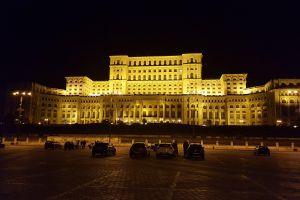
Complete Bucharest Communism Tour: Palace of Parliament & Ceausescu's Home
Start from: Bucharest
Or visit this unique time-bubble communist apartment to feel what it was like to live in communist Romania:
nd in case you're wondering is Bucharest worth visiting? The short answer is YES. For the long one, read our city guide on the many things to do in Bucharest and decide for yourself.
17. Admire the most beautiful buildings in Romania
The capital of Romania is by far the largest city and is worth visiting even if only to go for a short walk in the city centre, for example in University Square and then on Calea Victoriei Boulevard to see some of the most beautiful buildings in Romania such as the Romanian Athenaeum.
In fact, Romania is full of impressive buildings. If cities like Bucharest, Brasov, and Sibiu have wowed you, don't miss other gems like Oradea's Black Eagle Palace, Town Hall, and National Theatre. In Constanta, check out the Casino, an elegant building by the Black Sea.
And just 10 km from Bucharest, visit the beautiful Mogosoaia Palace, built by Constantin Brâncoveanu between 1698 and 1702.
18. A famous tourist attraction: Transfăgărășan Highway
The ultimate sightseeing – and driving – experience in Romania is a road trip on Transfăgărășan Highway - I know, a mouthful to pronounce! :)
Just 3 hours from Bucharest or 1.5 hours from Sibiu or Brasov, the Transfagarasan Highway spans 150 km through the Fagaras Mountains. Built during the communist rule for military use, it involved the use of 6,000 tons of dynamite.
Famous for being named the world's best road by Jeremy Clarkson on Top Gear, it's a must-visit for driving enthusiasts, with thrilling twists and turns and breathtaking views of Romania's tallest mountains.
The road ends at the stunning Balea Lake, at 2,200m, offering panoramic views of Transylvania's plains and nearby peaks over 2,500m. In winter, you can also find an ice hotel here.
This popular spot is also a hub for hiking routes. The road is open from July 1st to October 30th; outside that period, access is limited to cable cars from Sibiu or Brasov, weather permitting.
Local tip:Less famous but equally spectacular are Transalpina and Transbucegi roads - two other high-altitude driving roads that offer more than just a driving experience!
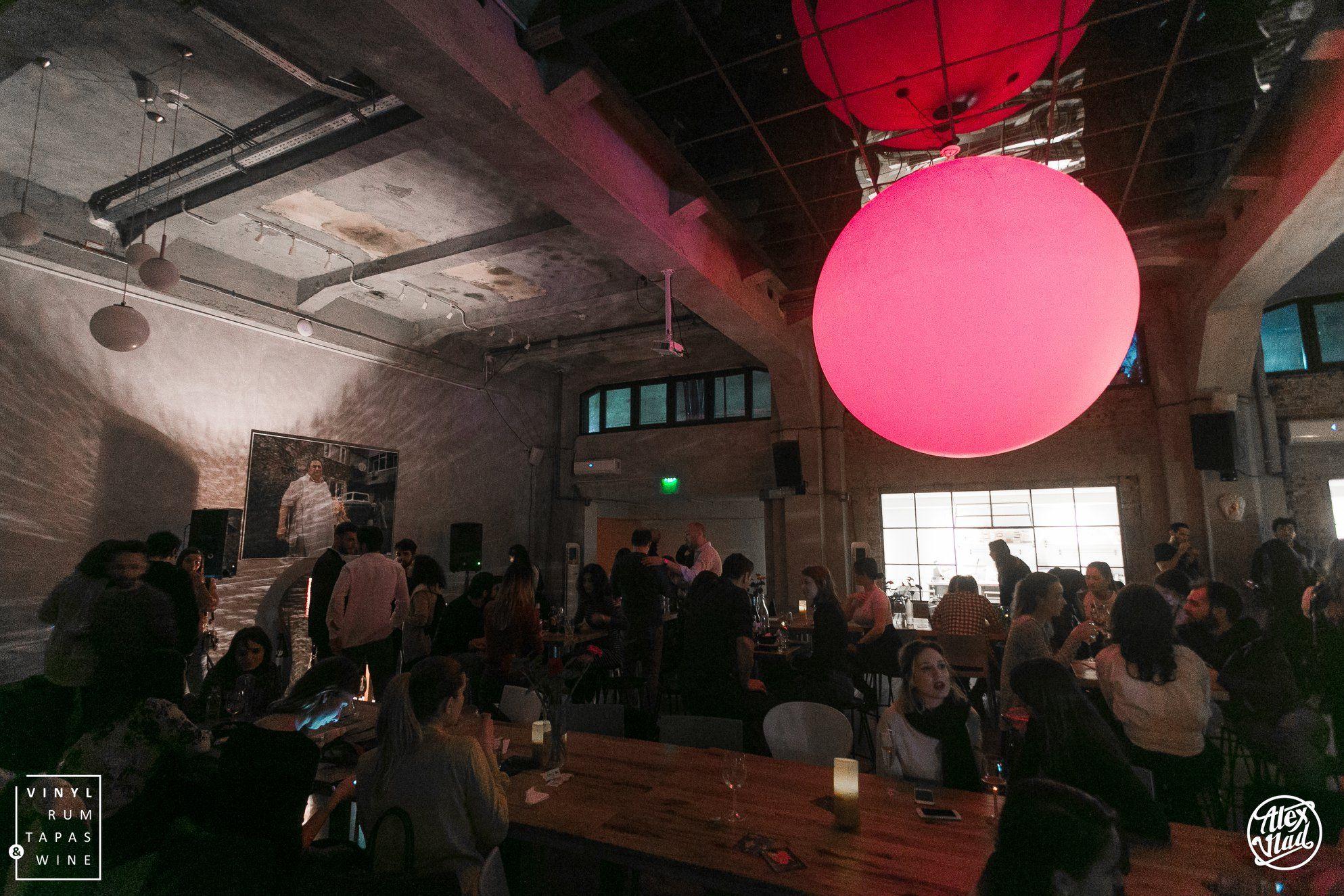
19. Go out in Bucharest's Old Town
One unique experience in Romania is exploring Bucharest's vibrant nightlife, especially in the Old Town. Lipscani Street is the heart of the action, with over 50 bars where locals and tourists mingle. It's a hotspot for stag and bachelorette parties, thanks to Romania's love for going out.
Even if you're not into clubbing, Bucharest offers beautiful restaurants, trendy bars, and cozy wine spots. In summer, many transform into charming urban gardens. Whether for dinner or drinks, you'll get a taste of local life at its best.
For a luxury clubbing experience, head north to clubs like Fratelli or Gaia, near Herastrau Lake, and dress to impress!
Local tip: The real Bucharest nightlife starts after 11-12 pm - read our post on places to go out in Bucharest to find out more!
20. Discover the Black Sea beach
During the Summer months, Bucharest's nightlife scene moves to Constanta! In Mamaia beach resort you'll find the posh clubs by the beach while in the hippie resort of Vama Veche people go just to party all day, night and weekend long.
But Romania's Black Sea beaches offer more than just partying, as they're perfect for relaxing on golden, soft sands in a nice atmosphere. With 245 km of coastline, including nearly 150 km of sandy beaches, Romania boasts 15 beach resorts, drawing both locals and tourists each summer.
For the best recommendations, check out our guide to Romania's top Black Sea resorts.
21. See the Romanian Sphinx in the Bucegi Mountains
The Sphinx is a mysterious natural rock formation located high up in Bucegi Mountains. It's accessible via cable car from the small town of Busteni or on our hiking tours.
Local legends say the rock represents a god worshipped by the Dacians before Roman times, with some even linking it to aliens! Many believe the site holds special energy, drawing visitors to this unique Romanian mountain attraction.
The Romanian Sphinx also sparks folklore and conspiracy theories, making it a must-see for those interested in the paranormal or curious about the mystery behind it.
Nearby are also the Babele rock formations, and on a 4h hike (one way), you can reach Omu Peak, the 7th highest in Romania, at 2,505m altitude.
22. Experience authentic Romanian village life
Villagers in places like Transylvania, Maramureș, Bucovina, and the Apuseni Mountains still preserve age-old customs and traditions. Here you’ll see shepherds, horse carts, and fortified churches amid stunning landscapes.
Meals are homemade from garden produce and local ingredients, and the slower pace offers true peace and simplicity.
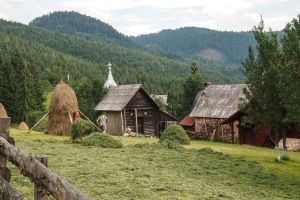
2 Day Hiking in Apuseni Natural Park: Culture & Local Life
Start from: Cluj-Napoca or Sibiu
Rural Romania may lack modern comforts, but its charm lies in its authenticity and warm, welcoming people. For a deeper cultural experience, visit Maramureș or Bucovina around Easter or Christmas.
Just remember: tourism infrastructure is basic. Few speak English, cash is essential, and traveling with a local guide makes the experience far easier and richer.
That's why we support inclusive tourism in Romania by including local services, meals and visits in our trips, so local communities benefit too while you have an authentic Romanian experience.
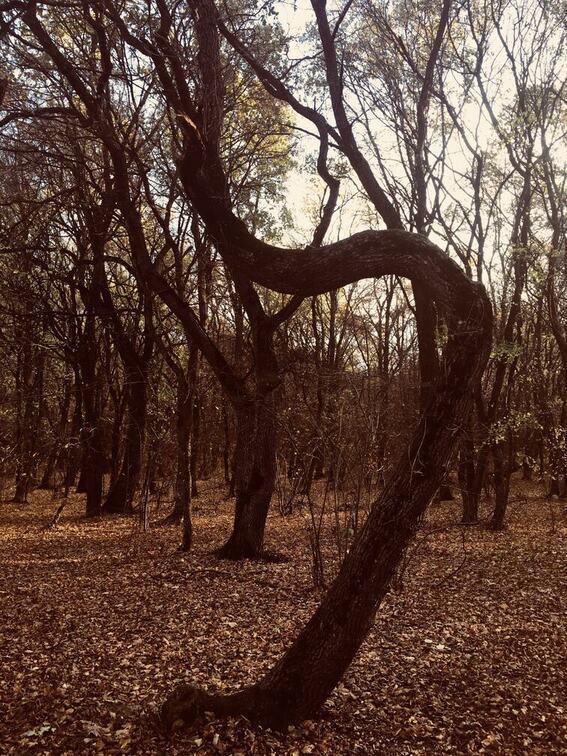
23. Visit Romania’s haunted forest - for real
Hoia Baciu Forest near Cluj-Napoca is one of Romania’s most mysterious places. Named after a shepherd whose flock vanished, it became famous in 1968 after a reported UFO sighting. Local legends and eerie stories only add to its haunted reputation.
The forest’s twisted trees and strange circular clearing, where nothing grows, make it unlike anywhere else. Many locals avoid it, claiming to hear voices at night, earning it the nickname “Romania’s haunted forest.”
I was sceptical at first, but after joining a guided night tour, the experience was unforgettable. Our passionate guide shared chilling tales, pointed out bizarre trees, and even gave us paranormal measurement tools to test the myths ourselves.
Whether you believe in ghosts or not, a Hoia Baciu Forest tour is one of the most unique and thrilling things to do in Romania.
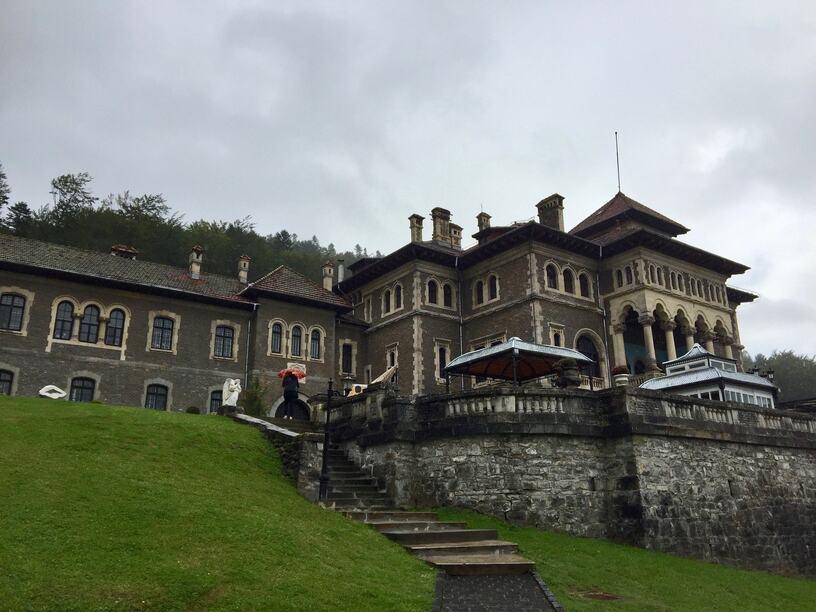
24. Cantacuzino Castle of the richest Romanian family
Not too far from Peleș Castle is the lesser-known Cantacuzino Castle. It belonged to Prince George Cantacuzino, considered to be the richest person in Romania in the late 19th century, and part of a famous political dynasty.
He built Cantacuzino Castle in the unique Romanian architectural style known as Brancovenesc (or Wallachian Reinassance for connaisseurs). The castle has now become an international sensation thanks to another Hollywood hit: it was featured in the popular Netflix series Wednesday directed by Tim Burton.
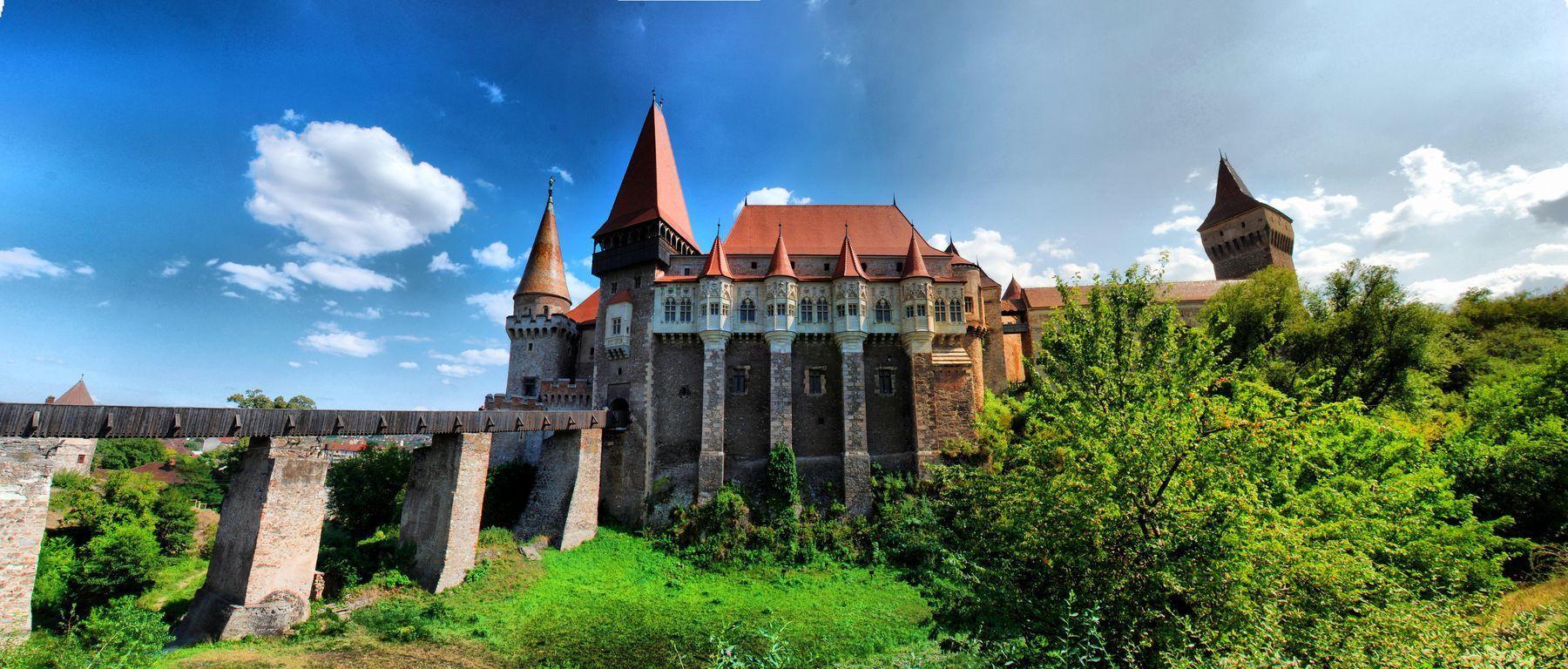
25. Best among medieval castles: Corvin Castle
Corvin Castle, also known as Hunyadi Castle, stands as a striking example of Gothic-Renaissance architecture in South-Western Transylvania, and it has the power to whisk you back the medieval times and leave a lasting impression.
It belonged to John Hunyadi, a military ruler of Transylvania and father of the king of Hungary, whose statue you can admire in the city of Cluj-Napoca.
Corvin Castle is one of Europe's largest castles and best preserved, with a history filled with mysterious legends. Besides it being stunning, I think it's better than its famous rival from Brasov County, Bran Castle.
Visitors can explore the impressive structure and learn about its transformation from a military fortress to a noble residence. The castle's rich history, coupled with its stunning architecture, many rooms, tall columns and defense towers, makes it a must-visit attraction in Romania.
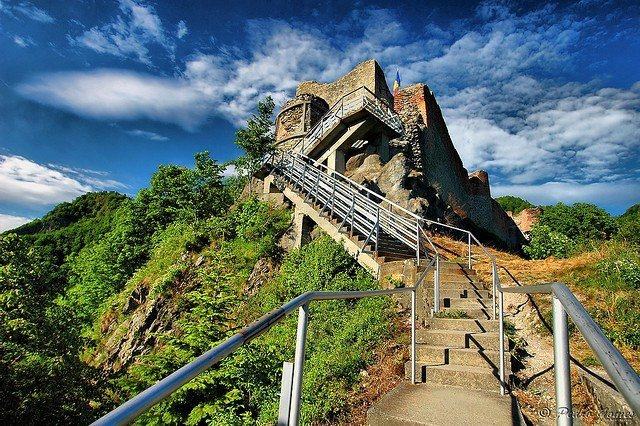
BONUS: Poenari Castle - the real Dracula Castle
Perhaps lesser known among so many medieval castles, Poenari Castle is still famous thanks to its real connection with Vlad Tepes.
Perched atop a cliff on the road leading to the Transfagarasan road, it offers a rich glimpse into Romania's medieval history. It was the stronghold of Vlad the Impaler, which is why it's called the real Dracula's Castle.
The ruins of Poenari Castle offer breathtaking views of the surrounding landscapes if you're ready to climb the 1480 steps there!
***
Whoa, that’s a long list!
And even if we haven’t mentioned other tourist attractions in Romania (like the Mud Volcanoes, Dacian Ruins, and the Saint Ana Lake) or great things to do for outdoor adventure fans: (rock-climbing, local craft workshops, caving, MTB or via ferrata), I think this should be enough to get you started with planning your trip to Romania.
On our website you'll find lots of resources, articles and tours and if you need help with your itinerary send us a message – happy to help!
Your Romanian Friend,
Marius
